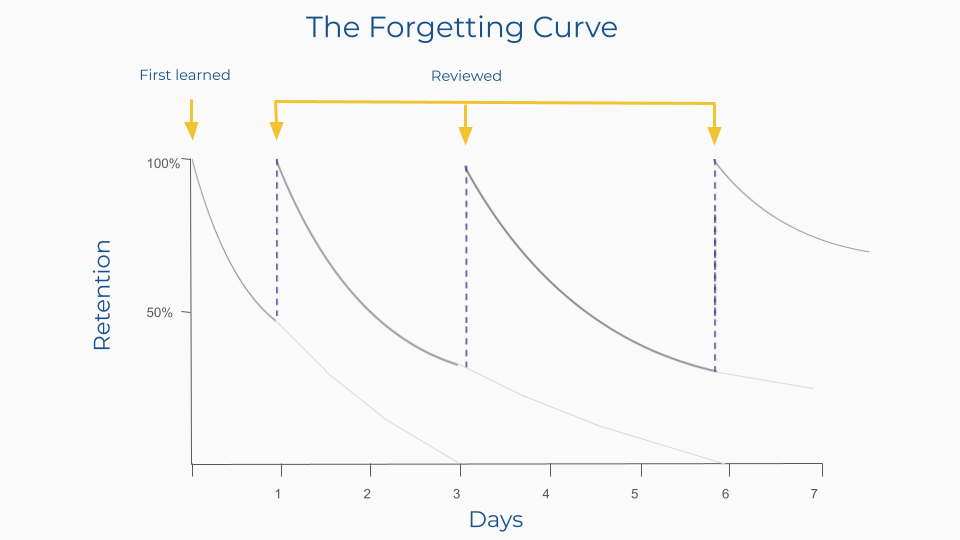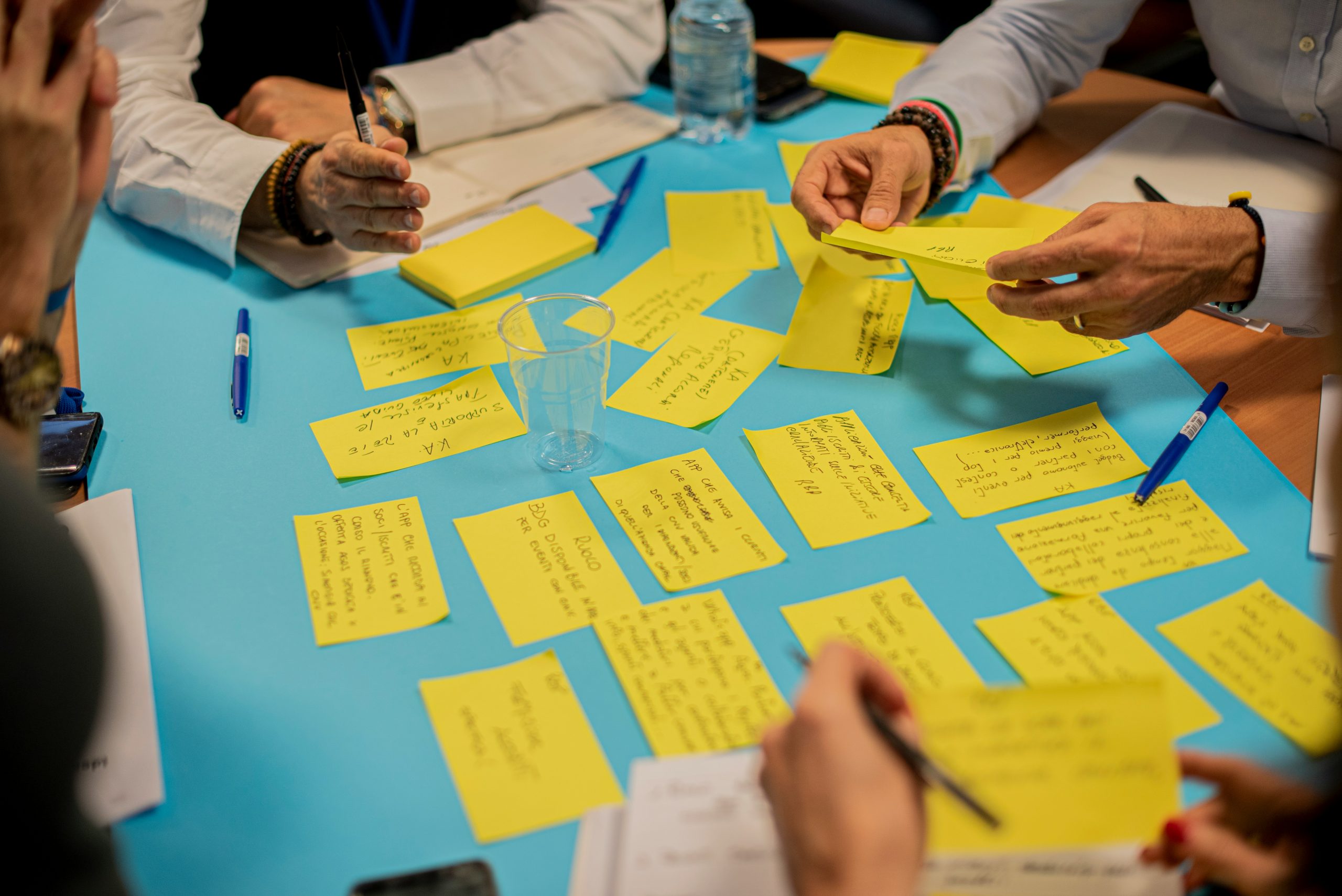21st January, 2020 • 3 min

Written by Mimi Village
15th March, 2024 •

In today’s fast-paced and digitalised world, people’s attention spans are becoming increasingly shorter. The average attention span has decreased from 12 seconds in 2000 to just 8 seconds in 2021. This has a significant impact on the way we work, the way we communicate, and the way we retain information.
Humans have a sharp forgetting curve when it comes to retaining new information. We can lose an average of 90% of new information after only 7 days. The good news is – we can overcome this by repeating the information, building habits and breaking learning down into ‘nudges’ or smaller chunks.

By breaking down information into small, digestible chunks, studies have found you can boost retention rates from 25% to 60%. This boosting and repeating of information allows the knowledge to stick and be embedded.
Here are 3 strategies to create habits and opportunities for learning and continuous development in your team.

Learning new skills and knowledge allows you to approach existing projects with a new lens and boosts associative thinking, which in turn helps generate creative and innovative strategies. To do this we need the headspace and guilt-free time to allow the brain to wander and form those new connections.
Example: At Higson, we have an annual learning rhythm. This includes bi-weekly ‘learns’: team members take it in turns to lead an interactive learn on a new topic quarterly ‘learn days’ where we collaborate to research, design and share back new ideas. And twice a year we each read a new book relating to current trends and share back what we have learnt, or found interesting. We also have a dedicated slack channel to post interesting and relevant findings and ideas from studies, blogs and new research. By holding ourselves accountable to this rhythm we ensure our training content is cutting edge, fresh and encourages a culture of innovation and continuous improvement across the whole team.
There are other benefits of learning together. Use opportunities for learning as a way to bring individuals together, this collaborative learning develops psychological safety and builds trust as Gabriella Kellerman and Martin Selligman highlight in their book Tomorrowmind. Learning in a team setting is also great for accountability, as everyone can review progress against learning goals together.
Example: General Electric uses a platform called BrilliantYOU that focuses on collaborative learning. Individuals can participate in discussions and collaborate with colleagues to enhance their skills and knowledge. Learning together in these short bursts is a great way to cultivate creativity and innovation in your teams.
Overcome the nature of our forgetful brains and flatten out that forgetting curve byre-visiting learning. We either ‘use it or lose it’ when it comes to knowledge and new skills. Following training programmes incorporate short quizzes or gamify memory processes as part of the continued follow-up process. In this way we can avoid losing 90%.
Example At IBM individuals can earn ‘badges’ by completing short quizzes and assessments related to specific topics or skills (such as tech trends, cybersecurity, leadership). This taps into the dopamine reward system giving employees a hit of satisfaction to help build learning into a habit.
Whether it is to embed the knowledge from a training module, keep that brain growing and healthy or improving a fun hobby to tell your friends about, here are 5 steps you can use to build effective habits around learning.

Maybe you want to embed the teaching from that language class? Or you want to pursue an interest in Ancient Greek history for some great facts around the dinner table. Perhaps you want to develop your presentation skills to wow in your next pitch. Decide what you want to improve.
Next, set focus areas around this goal. What are some measurable outcomes you could set? For developing your presentation skills, it could be being able to deliver your 5 minute pitch persuasively by the end of the month.
Consider your mode of learning. Do you prefer podcasts and auditory learning, reading articles and seeing visuals, or simply doing? You could incorporate multiple forms and approach your learning brain from all angles.
In the context of presentation skills it could look like:
Find a suitable, regular time where you can learn. Bear in mind, most people tend to be most productive and ready to absorb knowledge at the start of the day when our cortisol is high, although we do get an evening burst of creativity in the evening (between 4 and 8pm) due to another cortisol spike.
With your presentation skills, maybe your voice is most fresh and alert in the morning and you could spend10 minutes with your morning coffee to practise. Or maybe your brain is more in gear after work, so you could practise with family members before dinner.
Allocate dedicated time slots for you to learn, even as short as 10 or 15 minutes. Nir Eyal goes into the importance of ‘timeboxing’ and scheduling small sections of learning time, in his book Indistractable. By setting aside specific times for learning, it becomes easier to establish a habit and ensure regular engagement.
This could spice up your commute to or from the office, over a lunch break, or while you munch some breakfast and wait for the kettle to boil in the morning while that mind is still fresh. Blocking out this time and taking the time to schedule it into your calendar helps hold you accountable.
The act of blocking out time may be enough to keep you accountable, but for some of us, growing this new learning habit may need more of a nudge. So, use reminders.
Schedule sending yourself emails can be a great way to push you towards your learning goals. For example receiving an email reminding you of your presentation skills development areas might boost your motivation to develop that skill. Alternatively, engage your team at work or family to get involved and keep you on track.
If you’re interested in learning more about embedding learning or finding out more about how Higson could help you and your team, please get in touch.